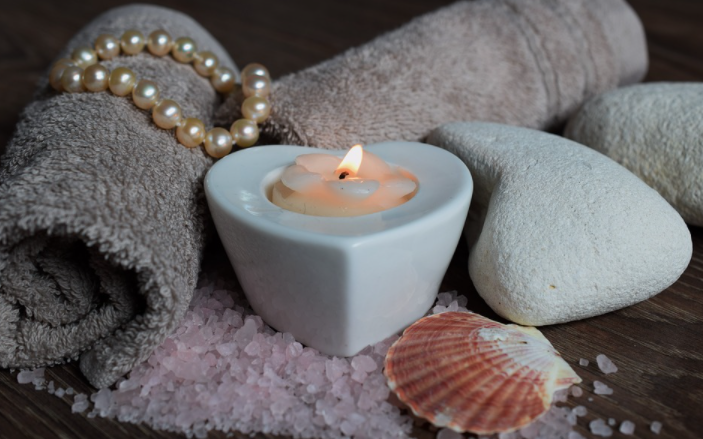A Brief Overview of Salt Therapy Yoga

Among many bizarre fitness practices globally, salt therapy yoga becomes the most popular due to its excellent benefits for the human body. You can learn more about this salt yoga and other unique fitness practices around the world at https://www.refinery29.com/en-us/unique-fitness-classes-weird-workouts#slide-19. Salt therapy yoga requires a set of aromatherapy salt, such as Himalayan Salt, Dead Sea Salt, etc., to help the yoga become more beneficial to the human’s respiratory system and skin health. In this article, we will take a look at a brief overview of salt therapy yoga.

Introduction to Salt Therapy Yoga
Salt therapy yoga is a yoga that is performed in a salt spa cave. Salt therapy falls into the realm of physical treatments. It is a non-invasive and natural treatment without the side effects of drugs normally used to treat these disorders, such as corticosteroids or steroids. The absence of these drugs makes this therapy safe for pregnant women and very young children. Children who receive this treatment breathe a lower concentration of the saline atmosphere.
History of Salt Therapy
 Salt therapy was originally found to be speleotherapy or cave therapy, “spelenos” being Greek for “cave.” Felix Botchkowski found that salt miners in Poland did not suffer from lung diseases such as asthma, pneumonia or chronic bronchitis. Felix Botchkowski published a book about his findings in 1843. His predecessor, Mstislav Poljokowski, founded the first salt bath in Velicko, which is still in operation today. The benefits of salt were also observed in the 1940s, when people who took refuge in these mines noticed a decrease in respiratory diseases.
Salt therapy was originally found to be speleotherapy or cave therapy, “spelenos” being Greek for “cave.” Felix Botchkowski found that salt miners in Poland did not suffer from lung diseases such as asthma, pneumonia or chronic bronchitis. Felix Botchkowski published a book about his findings in 1843. His predecessor, Mstislav Poljokowski, founded the first salt bath in Velicko, which is still in operation today. The benefits of salt were also observed in the 1940s, when people who took refuge in these mines noticed a decrease in respiratory diseases.
How Salt Therapy Works
Salt therapy is the treatment of respiratory illnesses and some skin diseases with salt air in underground caves. The salt’s natural micronutrients and vitamins have been shown to be effective in relieving inflamed respiratory tracts. Inhaling the stale air thins mucus in the lungs, making it easier to cough. It has been shown to cleanse smokers’ lungs of tar residue. Salt ions create a negative electrical charge in the air that improves mood, reduces anxiety and restlessness, reduces fatigue, and has numerous other healing effects.
During a remedy, the person can relax in the salt cave until the end of the session. Treatments are recommended up to 3 times per year. Caving therapies are usually not confidential; patients often discuss a healing cave with up to thirty other men and women. Artificial salt rooms offer the opportunity to have a private session, but larger salt rooms are designed to accommodate many more patients.
Simple Salt Therapy Practice at Home
Salt therapy can also be used separately in your home. An atmospheric salinator is another method of getting the same benefits as salt treatment. They calculate the distance exactly like a salt mine. Salt lamps are also an easy way to change the electrical charge in the room. This purifies the air inside the room. The salt rays stick to the air pollutants, thickening them so that they are released from the air and not inhaled. The negative ions improve mood and relieve tension and stress.
An easy way to incorporate salt therapy into massage therapy would be with salt lamps. Although the salt lamp is not as powerful as a hidden speleotherapy treatment, it reproduces similar results. In addition to being therapeutic things, salt with air ionizers could also be a medical complement to a massage practice atmosphere. Although both of these devices produce fairly favorable results, both have a disadvantage: The products’ effects are limited to the room. In a multi-room practice, many devices are likely to be needed to power the entire practice.



